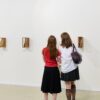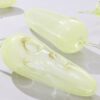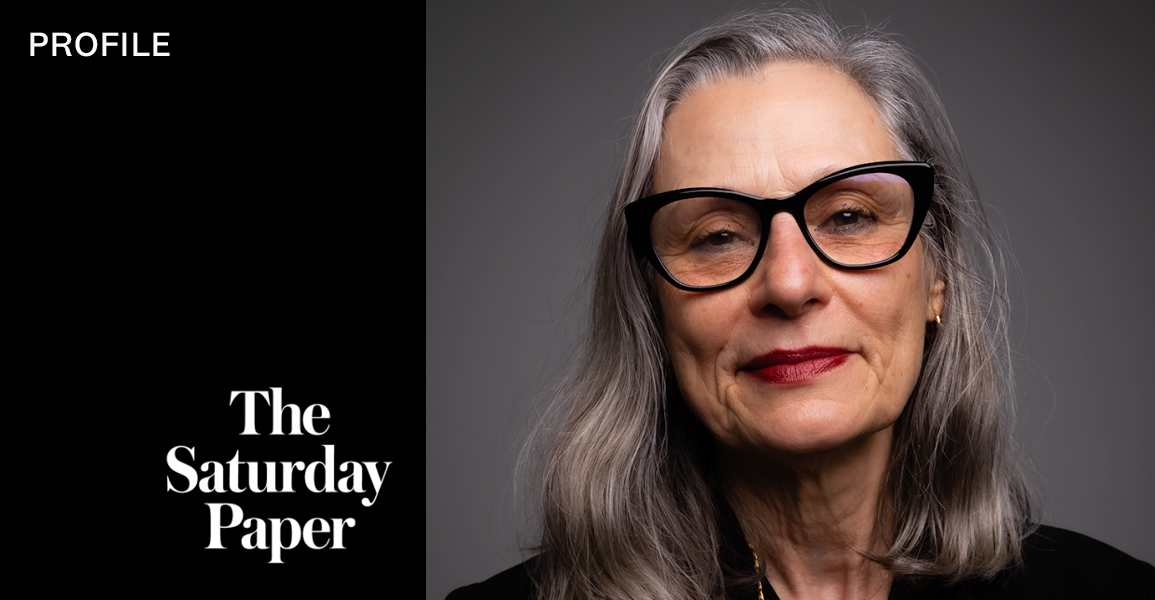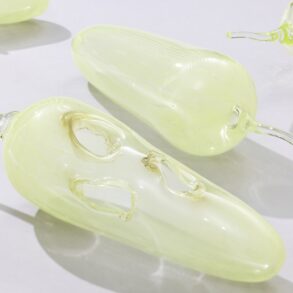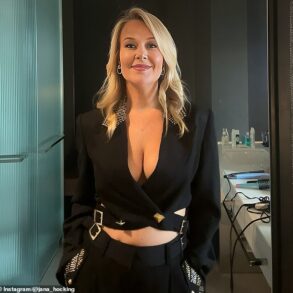
“What is a woman?” Simone de Beauvoir famously asked in her 1949 classic The Second Sex. At the turn of the 1980s, the young Julie Rrap – then a budding artist in her late 20s – encountered de Beauvoir’s book. “It was,” she says, “like a light bulb went off in my head.”
Rrap, now in her 70s, sits in the one-bedroom home in Leichhardt that doubles as her studio. Widely considered a pioneer of contemporary feminist art in Australia, Rrap has worked across photography, painting, performance, sculpture and video for more than 40 years, often using her own naked body as subject. If those years have seen a preoccupation with how women are represented and defined, it is an inquiry also stirred by another question. “Something was coalescing then,” she says, thinking back. “I started to look at art history books and it really struck me that I’d see all these pictures of women, but where were the women artists?”
Rrap’s response to this apparent absence was her seminal 1982 debut Disclosures: A Photographic Construct, an installation work comprising a series of mostly black-and-white photographs the artist made of herself in various stages of undress. Combining the use of mirrors as both prop and tool with the mirror technology of the camera slung around her neck, Rrap positions herself as both artist and model. Posing and not posing, exposed and concealed, fragmented and pieced back together, the reiterated woman – expressionless – looks at the viewer looking at her, disarming and inverting their gaze across her nude form.
First shown at Sydney’s Central Street Gallery, Disclosures is both a focus and jumping off point for an exhibition opening this month at Sydney’s Museum of Contemporary Art (MCA), Past Continuous, which will present new works Rrap has made in conversation with those founding images.
One of those new works is SOMOS (Standing On My Own Shoulders), a large-scale bronze sculpture of the artist performing the impossible feat its title describes. Made from castings of her body that required durational posing, SOMOS is a fusing of parts that are faithful to the real but that together subvert and perplex.
Disclosures and SOMOS bookend Rrap’s career as a “trickster” – a term she has long used to frame her approach and that perhaps finds root in her reversal of her birth surname, Parr. Disclosures seeks to open up the possibilities of photography as a medium for representation: the fragmented images serve to dissolve the subject, transforming our impression of them as self-portraits into something much less straightforward.
Similarly, SOMOS interrupts our reading of the bronze medium and its classic sculptural form to present an older female body elevating itself to previously unattainable heights. “That body is not really there in representational history,” Rrap says. Familiar but strange, it forces a double take not only on the act being performed but on the historical erasure of the kind of body performing it. Plus, it’s quite funny.
Past Continuous will also present three new video works. In Drawn In, viewers follow charcoal lines drawn by Rrap’s body from the perspective of three GoPro cameras tied to her head, wrist and stomach, building on recent works Drawn Out (2022) and The Dust of History (2022). Time passing through me, which will play on loop on a two-metre tall LCD screen, captures one of the most memorable images from Disclosures – of the naked, full-bushed young artist with her hands in the air – floating transposed on a translucent cloth. Mirror Talk places an “alphabet” of the artist’s young face from Disclosures in conversation – via a Sylvia Plath poem – with the alphabet of her older face from her 2021 work Write Me.
Rrap is revisiting a time where her focus centred on the female body, but her contemporary response is something that opens out to broader readings about time and its passing, about memory and fidelity and reliability, about expectation and anticipation. “As a young woman, what I was saying is you could see in endless iterations across – not just art history but across photography in all its uses – there was this certain type of young female body,” she says. “Disclosures was this excessive dismantling of that. Now I’m putting my own practice under investigation, because, why wouldn’t you? What do you do after 40-odd years?”
Born in 1950 in Lismore, New South Wales, Rrap is one of five children, including the performance artist Mike Parr, her oldest brother. Rrap mostly grew up on a farm in Nerang, near the Gold Coast, but the family of seven moved around a lot and “lived in some pretty interesting conditions”, she says, including in a shed and a tent at various points. “My father was a pretty restless character. He just wanted to go bush really.” The result was a childhood marked by a freedom to roam.
Rrap’s reference points at the time of making Disclosures might have been limited on the one hand, but on the other, as a young adult she found herself standing on uniquely fertile artistic ground. She had recently graduated from the University of Queensland, where she’d been involved in the anti-Vietnam War “rad” movement (short for “radicals”) and was living in Sydney next door to her brother Mike. He was already a central figure in the city’s thriving independent performance art scene and regularly welcomed international peers such as the now-famous duo Marina Abramović and Ulay. Rrap was involved in this world as both observer and participant. “My art education was out there in the field,” she says. “It wasn’t in an institution,” she says.
The influence of that period on Rrap’s approach to a professional arts career can’t be understated and nor can its significance, she says, within Australian art history. “That part of the art world was different, I guess because it wasn’t product-based. There was an exchange between artists in all parts of the world that was nothing to do with museums. It was a natural meeting of like-minded people who were interested in exploring the edges and borders of things,” she says.
“That was an international moment for Australian artists working in that way. It was guided by artists, it was empowered, and that was my introduction to what you could be as an artist. It was a very interesting training ground.”
While Professor Julie Rrap is now the co-director of the Sydney College of the Arts, she lasted less than a year at art school herself. And while she has been represented in Sydney by Roslyn Oxley9 Gallery since the gallerist first exhibited her work in 1983, Rrap maintains a distinct inquiry-led practice that often pays little attention to the commercial potential of its output. “Sometimes I’ve done quite well and other times nothing happens with it,” she says. “But I never see it necessarily as a reflection of quality.”
The intra-practice dialogue that provides the curatorial basis for Past Continuous plays out across Rrap’s career. She has always wielded a finely tuned skill for clever recall and referential flirtation, both within individual bodies of work, between them, and with the external. This is most evident in her early work, such as Persona and Shadow (1984), in which Rrap contests the female tropes represented in the work of Edvard Munch, or Thief’s Journal (1986), where she turns her lens on the likes of René Magritte, Paul Delvaux and Balthus.
In 1986, Rrap went to Europe for a six-month residency at the Cité internationale des arts, and ended up living there for eight years – five of those in Belgium with celebrated but contentious artist Wim Delvoye, well-known for his tattooing of sedated pigs. Rrap exhibited widely in Europe. She revelled in the buzz surrounding legendary curator Jan Hoet, whose Stedelijk Museum voor Actuele Kunst, commonly known as SMAK, was all the rage. “It was just this moment in time where I happened to be somewhere things were happening,” she says.
Even so, Rrap was disenchanted with how, despite Europe’s apparently liberal arts culture, so few women artists were included in exhibitions. Meanwhile, in Australia, between the likes of Tracey Moffatt, the late Destiny Deacon, Rosemary Laing and Jacky Redgate, Australian women photographers were having a moment. “I was very clear about what was possible in Europe, and I was also very clear that my work meant more here. I still believe that.”
On her return to Australia in 1994, Rrap’s work reflected her time among Europe’s avant-garde in its engagement with ideas of the grotesque and corporeal transgression. In Porous Bodies (1999), for example, a series of 11 video works, Rrap deconstructs the body into tongue, teeth, hair, blood and bone to disconcerting effect. In the early 2000s, these fixations emanated into investigations of pop culture and the boundlessness of the digital image. In A-R-Mour (2000), she poses as 10 different iconic female identities from cinema, paralleling with American artist Cindy Sherman’s breakout series Untitled Film Stills (1977-80).
Her widely noted 2001 work Overstepping, in which Rrap’s feet are manipulated to resemble a pair of kitten heel shoes, continues to take on new resonance as we grapple more than ever with the expanding possibilities and deepening problematics of image manipulation and artificial realities. Rrap is always in conversation with the past, but she also speculates about the future. Her work is not only feminist but treats feminism as a prism through which to interpret the world and to unlock new perceptions from her audience.
Some might mistake Rrap’s oeuvre retrospectively as a timeline of hot topics, but this would be a cynical view. Her fundamental interest in the representations and realities of female bodies has meandered but not wavered, and is fed by the artist’s “own little vortex”, as she calls it. “I read a lot, I look a lot. I do a lot of processing,” she says. “I often talk about my practice as a bounded field. I wander around the vegetable patch, put the carrots in over here, then go over there and the lettuce needs me. It’s got a frame around it, but there’s lots of different things growing.”
It’s a subject that never dies. De Beauvoir’s question is still being asked in the most simultaneously mundane and derisive of ways, coopted by right-wing culture warriors to elicit answers that at once deny the existence of transwomen and reduce all women down to mere “adult females”. Rrap’s work is exhaustingly inexhaustive.
That old discussion about what can and can’t be revealed of a woman’s body in her quest for liberation – artistic or otherwise – goes on too. “I was heavily criticised at the time [of Disclosures] by feminists,” she says. “I got quite savaged.” Rrap’s detractors claimed the then 32-year-old artist could show her body naked because she was a young, attractive woman or that she shouldn’t have shown it at all if she wanted to advance women. Familiar battle cries. “That’s precisely why I’ve gone back to using myself at 73,” she says. “Because … what do we do with that body in terms of all that rhetoric?”
Beyond where it places the ageing woman, Rrap isn’t in love with the state of art today. She loathes what she terms the “industry of art” – a pandering to money, spectacle, empty entertainment. “I think it’s a bad moment,” she says. But her commitment to practice remains. “In my own little world, I just hope I can keep feeding myself with ideas. I don’t need to make art for the sake of it. If I’ve got things I think are important to make, I’ll find a way to make them.”
It’s easy to forget Rrap’s age until she suggests retirement could be on the horizon, and with that comes renewed wonder about where she’ll go. “The simple reality of the art world is that sometimes things feel noticed and other times, not noticed. But when you work a long time, those ins and outs don’t bother you as much, because you’ve got your practice,” she says. “When I’ve just got clear sailing and I can travel at my own rhythm, I’m interested to see what I’ll do.”
This article was first published in the print edition of The Saturday Paper on
June 22, 2024 as “Tricky disclosures”.
For almost a decade, The Saturday Paper has published Australia’s leading writers and thinkers.
We have pursued stories that are ignored elsewhere, covering them with sensitivity and depth.
We have done this on refugee policy, on government integrity, on robo-debt, on aged care,
on climate change, on the pandemic.
All our journalism is fiercely independent. It relies on the support of readers.
By subscribing to The Saturday Paper, you are ensuring that we can continue to produce essential,
issue-defining coverage, to dig out stories that take time, to doggedly hold to account
politicians and the political class.
There are very few titles that have the freedom and the space to produce journalism like this.
In a country with a concentration of media ownership unlike anything else in the world,
it is vitally important. Your subscription helps make it possible.
This post was originally published on this site be sure to check out more of their content

